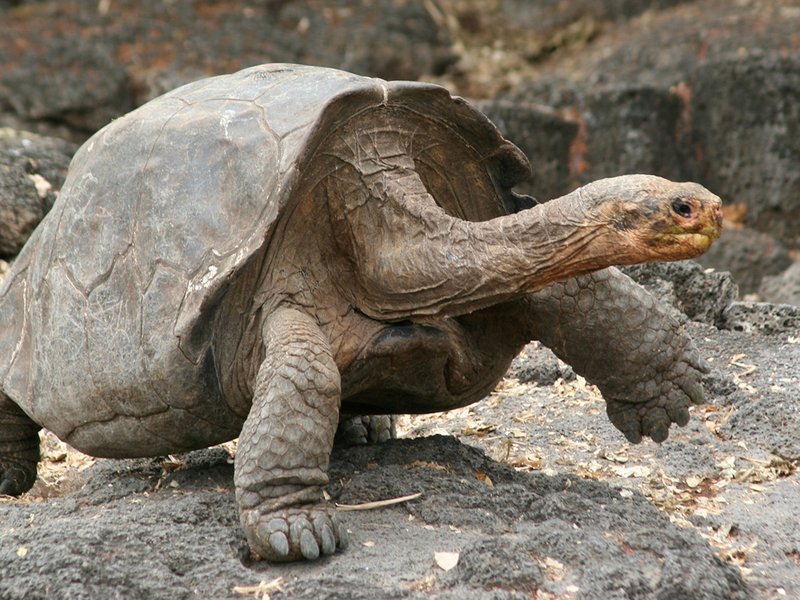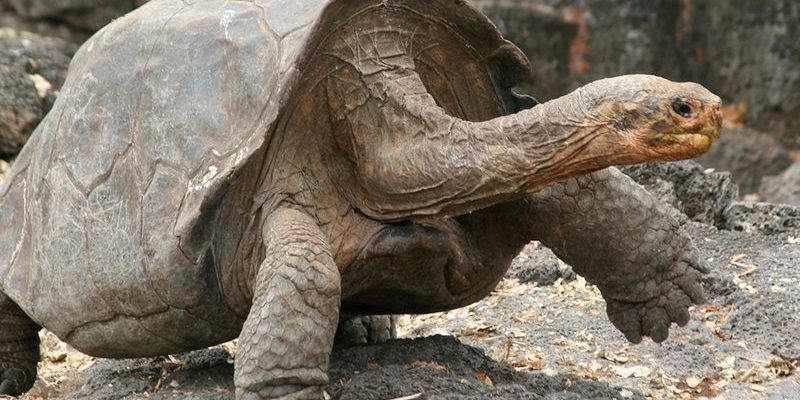
So, let’s break this down. You might be wondering if these gentle giants can actually pose a threat. The truth is, understanding their behavior and natural instincts is key. Just like any animal, the Galápagos tortoise can be dangerous under certain circumstances, but it’s not as black and white as it may seem.
An Overview of the Galápagos Tortoise
The Galápagos tortoise is one of the largest tortoise species in the world, with some weighing over 500 pounds! They can live for more than a century, making them more like fine wine, improving with age. They thrive on the various islands in the Galápagos archipelago, playing a significant role in their ecosystem. With long necks and distinct shells, they are truly a sight to behold.
You might be surprised to learn that there are several subspecies of Galápagos tortoises, each adapted to the unique environment of their respective islands. Their diet primarily consists of grasses, fruits, and cacti, which means they spend a lot of time grazing. Their slow and steady lifestyle is misleading; while they seem harmless, it’s essential to respect their space.
Understanding Their Behavior
Here’s the thing: Galápagos tortoises are generally very calm animals. Since they have slow metabolisms and aren’t built for speed, they don’t engage in aggressive behaviors like some other animals. They’re not out hunting anything, after all. Instead, they prefer to bask in the sun or munch on vegetation. Most of the time, they keep to themselves and are not inclined to attack.
However, when they feel threatened, their size can be intimidating. It’s important to remember that any wild animal can react differently when they feel cornered. For example, if someone were to approach a tortoise too closely or try to touch it, the tortoise might feel endangered and react defensively. They could withdraw into their shell, or in rare cases, try to push against an intruder.
What Situations Could Be Dangerous?
Although Galápagos tortoises aren’t known for aggression, there are certain situations where they might pose a danger to humans. Here are a few examples:
- Provocation: If you’re too close or trying to handle a tortoise, it can feel threatened. This can lead to defensive actions.
- Motherhood: Female tortoises protecting their nests may become aggressive if they perceive a threat to their eggs.
- Health and Injury: Sick or injured tortoises might react unpredictably if approached.
In each of these situations, being aware of the tortoise’s body language is crucial. A tortoise withdrawing into its shell or trying to retreat is a clear sign that it’s uncomfortable. Always keep a respectful distance to avoid any risk.
Interacting Safely with Galápagos Tortoises
If you find yourself near these giant reptiles, it’s essential to know how to interact safely. Here are some helpful tips to ensure a good experience for both you and the tortoises:
1. Stay Back: Keep a safe distance. Observing from afar allows you to admire them without causing stress.
2. Don’t Feed Them: Though it may seem tempting to feed them snacks, this can disrupt their natural diet and behavior. Stick to observing their natural foraging.
3. Respect Their Space: Avoid any sudden movements or loud noises that could startle them. Think of it like walking near a sleeping dog—gentleness goes a long way.
4. Guided Tours: If you’re visiting the Galápagos Islands, consider joining guided tours led by experts who understand the local wildlife. They can provide insights into safe practices.
Legal Protections and Conservation
The Galápagos tortoise is not just an incredible animal; it’s also a conservation success story. Due to overhunting and habitat loss, these tortoises faced severe population declines. Thankfully, conservation efforts have led to a rebound in their numbers. Laws protect them, making it illegal to harm or harass these tortoises.
Supporting conservation programs is a great way to help ensure their survival. By visiting the Galápagos responsibly, you can appreciate these unique creatures while also playing a role in their protection and conservation.
Taking Caution: Why Awareness is Key
While the Galápagos tortoise is not inherently dangerous, it’s crucial to approach them with caution and respect. As with any wild animal, maintaining a respectful distance is fundamental to a safe experience. Awareness of their behaviors and understanding their natural instincts can make your encounter enjoyable and memorable.
Moreover, understanding their potential for danger doesn’t mean you should avoid them altogether; it’s about fostering a relationship based on mutual respect. Just like we wouldn’t approach any large animal without caution, the same applies here.
So, can the Galápagos tortoise be dangerous to humans? In short, it’s very unlikely, but respect and caution are essential. These gentle giants may seem slow and harmless, but it’s crucial to recognize their feelings and needs.
By interacting with them safely and supporting their conservation, we can ensure that future generations will continue to marvel at these magnificent creatures. Whether you’re lucky enough to see one in the wild or just learning about them from afar, the Galápagos tortoise remains a captivating testament to nature’s wonders.

